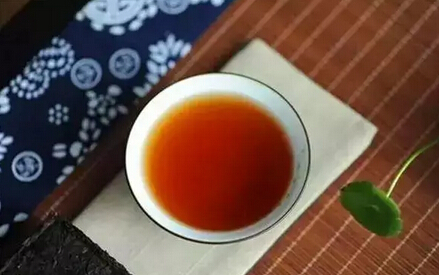
Dry tea color terminology
Oily and moist: The dry tea has a lively color and good luster.
Dull and dark: The color is dry and lacks luster.
Uniform: The leaf color is consistent.
Mixed: The leaf color and shape are inconsistent. This term also applies to the leaf bottom.
2. Tea soup color terminology
Clear: Clean, transparent, bright, and free of sediment.
Bright and colorful: Vivid, bright, and clear.
Fresh and bright: Fresh and bright. This term also applies to the leaf bottom.
Deep: The tea soup has a deep color.
Light: The tea soup is light like water.
Bright: The tea soup is clean and transparent.
Dark: Not transparent. This term also applies to the leaf bottom.
Turbid: The tea soup has a large amount of suspended matter and poor transparency.
Sediment: Substances that settle at the bottom of the bowl.
3. Aroma terminology
High aroma: The tea aroma is strong and lasting.
Pure: The tea aroma is neither too high nor too low, clean and normal.
Neutral: Low but without any odd or mixed smells.
Low: Slight but without any rough smell.
Stuffy: Stagnant and not refreshing.
Stale: Stuffy and not refreshing.
Rough: The smell of old leaves.
Grassy: With the smell of grass or green leaves.
High fire: Slightly roasted with a hint of burnt rice or caramel aroma.
Over-fired: More intense than high fire.
Aged: The smell of aged tea.
Off-flavors: Smells such as smoky, burnt, sour, rancid, or moldy caused by tea deterioration or contamination by foreign substances. Specify the type of off-flavor when using this term.
4. Taste terminology
Sweet aftertaste: Pleasant aftertaste with a slight sweetness.
Strong: The tea soup has a thick taste and strong stimulation.
Mellow and thick: Refreshing, sweet, and thick with stimulation.
Rich and mellow: Strong and refreshing with a sweet aftertaste. The stimulation is weaker than strong but stronger than mellow and thick.
Mellow and pure: Refreshing and normal with a slight sweetness.
Mellow and mild: Mellow and mild with sweetness. The stimulation is weaker than mellow and pure but stronger than mild.
Mild: Normal tea taste with weak stimulation.
Thin: Slight tea taste at first, then bland. Synonyms: light; bland.
Astringent: The tea soup feels rough and numbing in the mouth.
Rough: Coarse and sluggish.
Green and astringent: Astringent with a raw green taste.
Bitter: Bitter at first, with a more bitter aftertaste.
Cooked taste: The tea soup is not refreshing, with a steamed or stuffy taste.
High fire taste: Tea with high fire has a fire smell when tasted.
Over-fired taste: Similar to a burnt taste.
Aged taste: The taste of aged tea.
Off-tastes: Tastes such as smoky, burnt, sour, rancid, or moldy caused by tea deterioration or contamination by foreign substances. Specify the type of off-taste when using this term.
5. Leaf bottom terminology
Tender: Many buds. The leaves are small, tender, and soft.
Soft and tender: Tender and soft.
Soft: Feels like cotton when pressed, and lies flat after pressing.
Uniform: Consistent in terms of tenderness, size, thickness, completeness, or color.
Mixed: Inconsistent in terms of tenderness, size, thickness, completeness, or color.
Tender and uniform: The buds and leaves are uniform, tender, and soft.
Plump and thick: The buds are plump, the leaves are thick, and the veins are not exposed.
Open: The leaves are spread out and soft. Synonym: spread.
Spread out: Old leaves are spread out.
Rough and old: The leaves are rough and the veins are exposed.
Wrinkled: The leaves are old and wrinkled.
Thin and weak: The buds are small and the leaves are thin and weak.
Thin and hard: The leaves are old, thin, and hard.
Broken: Many broken and fragmented leaves.
Bright and fresh: Vivid and bright.
Dark and mixed: The leaf color is dark and inconsistent in tenderness.
Hard and mixed: The leaves are rough, hard, with many stems, and the color is mixed.
Burnt spots: Local black or yellow burn marks on the edges, surface, or back of the leaves.